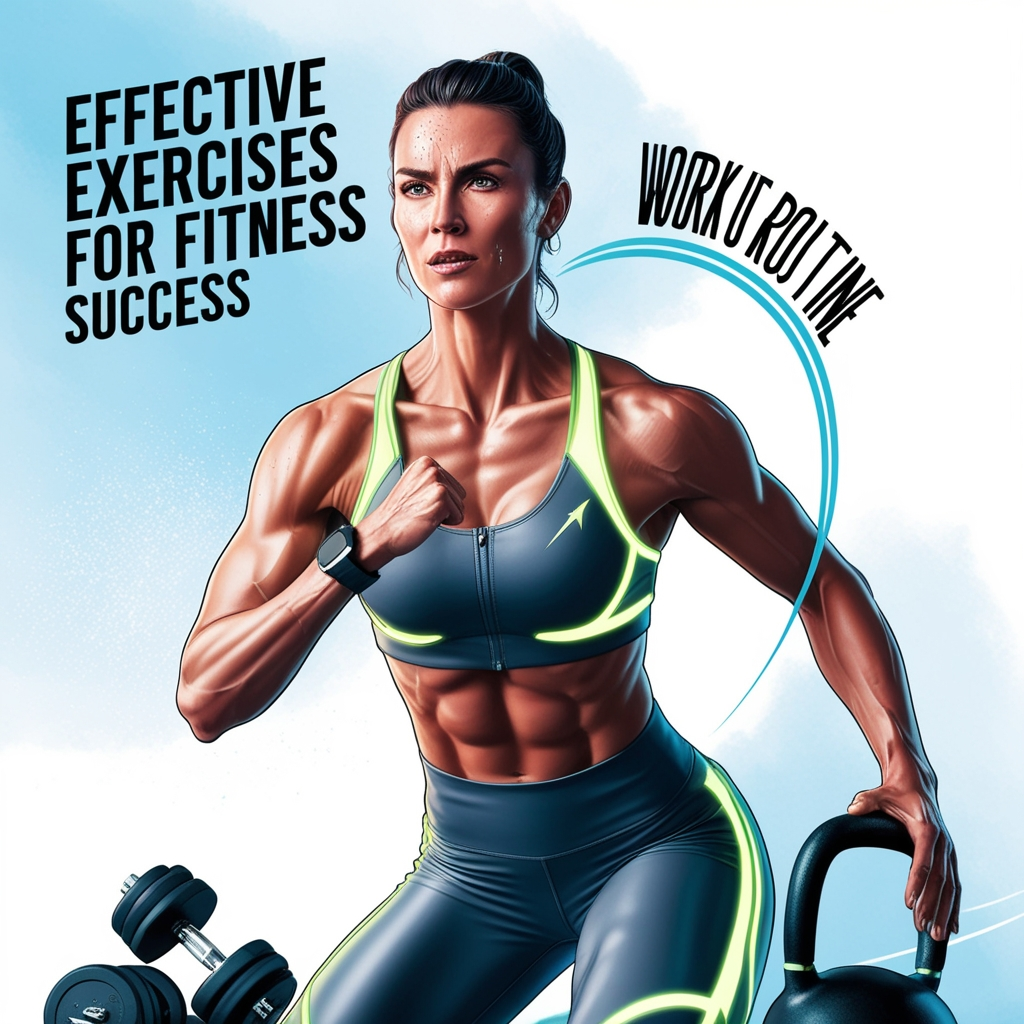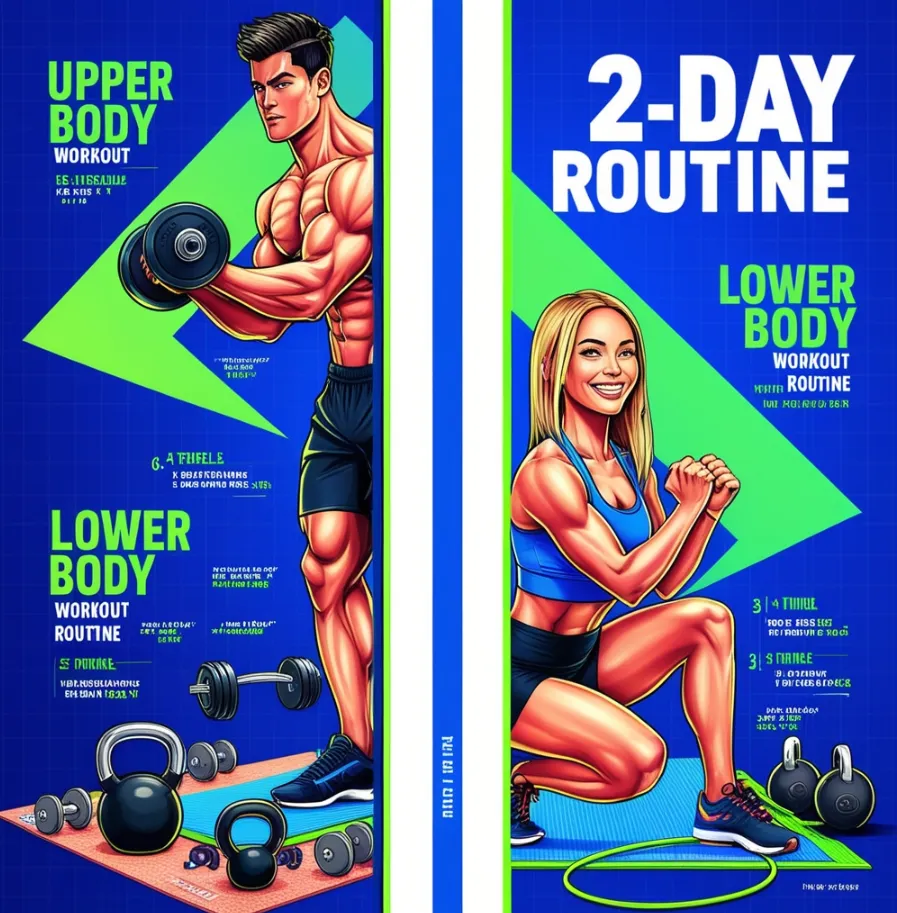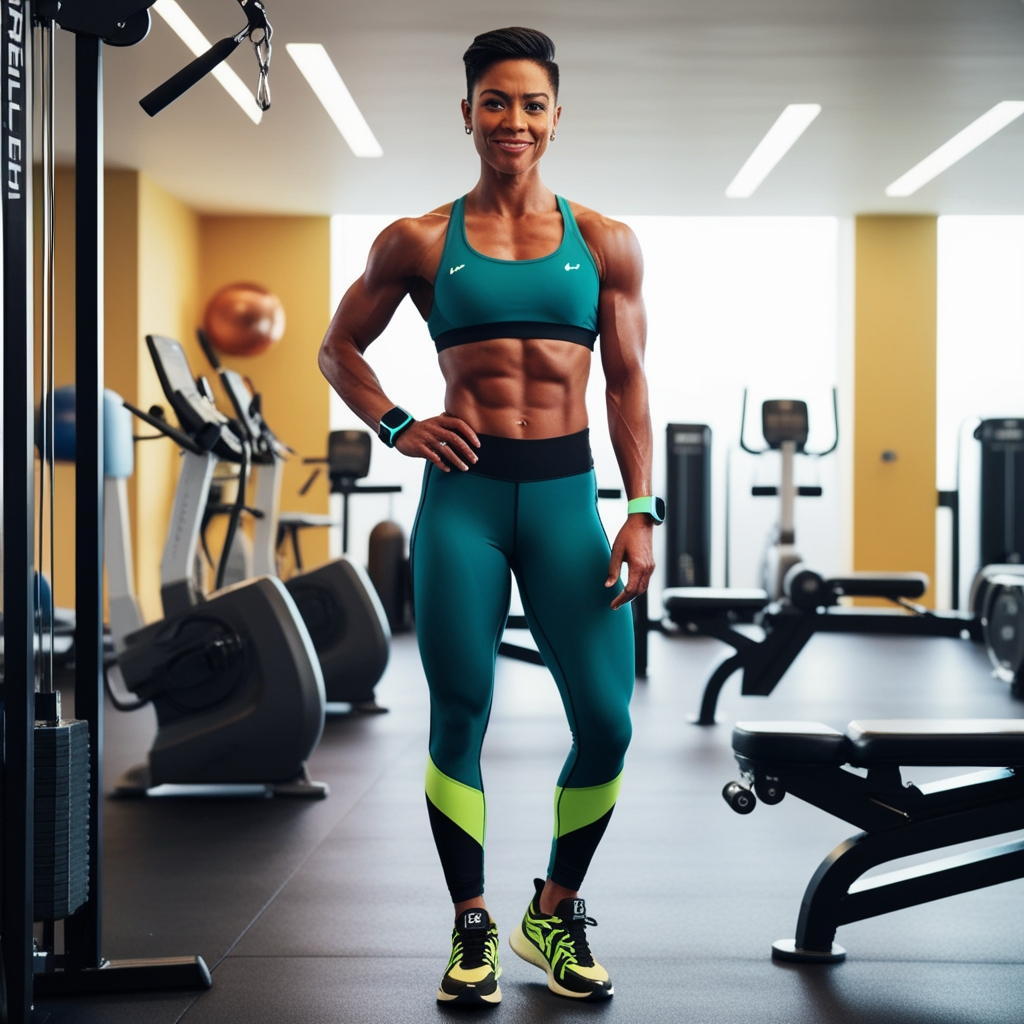Workout Routine: Effective Exercises for Fitness Success, Whether you are looking to shed pounds or add bulk, here is how to tailor your workout to help you reach your fitness goals. common workout include squats, lunges and pulls up.
Whether you are looking to transform your body or just kick your training up a notch, it’s important to add training volume ( in the form of reps sets and weight to stimulate new muscle growth as you progress. In general most beginners have been lifting for less than a year. Keep in mind that you should not attempt advanced workout unless you have appropriate strength training experience.

Easy Workouts for Fitness Newbies
- Week 1: Full body split
- Week 2: Upper and Lower Body Split: 2-Day Routine
- Week 3: Push/Pull/Legs: Effective 3-Day Training Split
- Week 4: Full Body Fitness: Four-Day Split Routine
Week 1: Full body split
You’ll begin the program with a full-body training split, meaning you’ll train all major body parts in each workout (as opposed to “splitting up” your training). Train three days this first week, performing just one exercise per bodypart in each session. It’s important that you have a day of rest between each workout to allow your body to recover; this makes training Monday, Wednesday and Friday—with Saturday and Sunday being rest days—a good approach.
In Week 1 you’ll perform three sets of every exercise per workout, which over the course of the week adds up to nine sets total for each bodypart, a good starting volume for your purposes. With the exception of crunches for abs, you’ll do 8–12 reps per set. This rep scheme is widely considered ideal for achieving gains in muscle size (the scientific term is hypertrophy) and is commonly employed by amateur and pro bodybuilders alike.
Notice in the workouts below that your first set calls for eight reps, your second set 10 reps and your third set 12. This is referred to in bodybuilding circles as a “reverse pyramid” (a standard pyramid goes from higher to lower reps), where you decrease the weight of each set to complete the higher rep count. For example, if on your first set of lat pulldowns you used 140 pounds for eight reps, try using 120 or 130 pounds on set two and 100–120 pounds on set three.
Week 2: Upper and Lower Body Split: 2-Day Routine
You’re only a week into the program, yet you’ll begin to train different body parts on different days with a two day training split ( meaning the entering body is then trained over the course of two days rather than one in as in the first fist week). You’ll train a total of four days this week. The split includes two upper days ( Monday to Thursday ) and two lower days ( Thursday to Friday), and each body part is the train twice. Wednesday, Saturday and Sunday will be your recovery days.

Several exercises from Week 1 are carried over to Week 2, but one move is added to each bodypart routine—with the exception of abs—so you can train all muscle groups more completely from multiple angles. Chest, for example, includes two exercises: One is a compound movement (dumbbell bench press) that involves multiple joints (both the shoulder and elbow) to work the largest amount of muscle possible, and the other is an isolation exercise (dumbbell flye) that involves only one joint (shoulder) and targets the pecs to a greater extent. (When doing presses for the chest, the deltoids and triceps are involved to a degree, meaning presses don’t isolate the pecs as much as flyes do.)
Week 3: Push/Pull/Legs: Effective 3-Day Training Split
In the third week of the program we step it up to a three-day training split: Train all “pushing” body parts (chest, shoulders, triceps) on Day 1; hit the “pulling” body parts (back, biceps) and abs on Day 2; and work your lower body (quads, glutes, hamstrings, calves) on Day 3. As in Week 2, you train each bodypart twice a week, so you’ll hit the gym six days this week.
One new exercise is added to each bodypart routine to provide even more angles from which to train your target muscles to promote complete development. You’ll hit each muscle group with two exercises of 3–4 sets each: four sets for large body parts (chest, back, shoulders, quads, hamstrings) and three sets for smaller body parts (biceps, triceps, abs, calves). The result is 16 total sets for the week for large body parts and 12 sets total for smaller ones—again, working in the 8–15-rep range—which is a substantial increase in volume from Week 1.
Week 4: Full Body Fitness: Four-Day Split Routine
In the fourth and final week of the program, you’ll train four days in a four-way split that hits each bodypart just once (except for calves and abs, which are each trained twice). Four-day splits are common among experienced lifters because they involve training fewer bodyparts (typically 2–3) per workout, which gives each muscle group ample attention and allows you to train with higher volume.
As you’ll see, chest and triceps are paired up, as are back with biceps and quads with hamstrings, each a very common pairing among novice and advanced bodybuilders. Shoulders are trained more or less on their own, and you’ll alternate hitting calves and abs—which respond well to being trained multiple times per week—every other workout. No new exercises are introduced in Week 4 so that you can focus on intensity in your workouts instead of learning new movements.

Rep schemes remain in the hypertrophy range this week, but overall volume increases by adding more sets to individual exercises: up to five sets per move for larger body parts, and even 10 sets of calf raises on Thursday. This bump in volume will ensure that your muscles are overloaded sufficiently to continue the growth they’ve already begun experiencing in the first three weeks. Completion of this four-week program now entitles you to go to the next stage.
Example Gym Workout Routine to Build Muscle
ee top tips before you get started on your bulking workout plan:
- In general, it’s best to prioritise compound movements and supplement with isolation exercises. This means starting with exercises that work more than one muscle group (like a deadlift) and then finishing up with isolation exercises that focus on more specific muscles (such as bicep curls).
- Always begin with a dynamic warm-up and finish with some static stretches to cool down. This step is vital to maintain mobility and reduce your risk of injury.
- Make sure to include regular rest days. You’ll want to wait at least a day between working the same muscle group twice to give your muscles time to repair and grow between sessions, but schedule at least one full rest day a week.
What type of exercise should you do?
There is no single type of exercise that can take care of all your needs. In fact, to get the most benefits from your routine, you want a mix of activities during the course of a week. Otherwise, it’s like a diet consisting only of fruit—healthful as far as it goes, but lacking a lot of the nutrients you’ll find in other foods, such as fish, vegetables, nuts, and whole grains.
Developing a balanced exercise plan
So what does a balanced exercise plan consist of? The Physical Activity Guidelines for Americans from the U.S. Department of Health and Human Services urge all adults to include the following types of exercise in their weekly routines:
- 150 minutes of moderate aerobic exercise per week (for example, 30 minutes on each of five days)
or 75 minutes of vigorous aerobic activity (or an equiva- lent mix of the two). - two or more strength training sessions per week, with at least 48 hours in between to allow muscles
to recover. - balance exercises for older adults at risk for falls.
If this all sounds overwhelming, remember that workouts can be broken up into smaller segments. For example, three 10-minute walks can get you to your daily goal of 30 minutes of aerobic exercise.
Each workout should also include a simple warm-up at the beginning and a cool-down at the end. The warm-up should consist of gentle exercise, such as marching in place, to loosen up your muscles and get more oxygen-rich blood flowing to them. To cool down, slow your activity and the intensity for five to 10 minutes, then finish off with stretches to help prevent stiffness.
Read on to learn more about each component of a balanced exercise program in greater depth and suggest a mix of activities and exercises to get you going.
Aerobic exercise
Often called cardio or endurance activities, aerobic activities are great for burning calories and paring down unwanted fat. They consist of activities that make the heart and lungs work harder: think of walking, biking, running, and swimming, for example.
Aerobic exercise temporarily boosts your heart rate and breathing, allowing more oxygen to reach your muscles and tuning up cardiovascular endurance. These are the activities that are associated with lower risk for many diseases and longer life span.
How Much Activity Do You Need?
The Physical Activity Guidelines for Americans recommend accumulating a weekly total of at least two- and-a-half hours of moderate aerobic activity, or one hour and 15 minutes of vigorous aerobic activity. (Note: If you prefer a mix, 10 minutes of vigorous activity equals roughly 20 minutes of moderate activity.) Raising your weekly goal to five hours of moderate activity, or two-and-a-half hours of vigorous activity, nets additional health benefits, especially weight loss. Each session should last at least 10 minutes.
Get started
Walking is usually safe for people of any age or level of fitness and can easily be adjusted to a comfortable speed. It doesn’t jar joints or raise your heart rate to dangerous levels. For a greater challenge, you can add time, distance, or hills to improve endurance or use resistance bands to tone while you walk.
Follow these tips to get the best workout from your walks:
Find a safe place to walk. Quiet streets with side- walks, park trails, athletic tracks at local schools, or shopping malls are often good choices.
Buy a good pair of shoes. Look for supportive but flexible soles that cushion your feet. Comfort is the key when buying shoes for walking. Shop at the end of the day when your feet are at their largest size. Choose shoes with “breathable” uppers, such as nylon mesh.
Dress for comfort and safety. Wear lighter clothes than you’d need if standing still. Dress in layers so you can peel off garments if you get hot. Light-colored clothes and a reflective vest help drivers notice you.
Do a five-minute warm-up and cool-down. Start off at a slower pace for your warm-up. At the end of your walk, slow down to cool down (even if you’re not sweaty).
Practice good technique:
- Walk at a brisk, steady pace. Slow down if you’re too breathless to carry on a conversation.
- Stand tall.
- Hold your head up so your chin is level and look 10 to 20 feet in front of you.
- Lift your chest.
- Keep your shoulders down.
- Point your toes straight ahead.
- Let your arms swing loosely at your sides. If you want to boost your speed, bend your elbows at 90-degree angles and swing your hands from waist to chest height.
- Land on your heel, then roll forward onto the ball of your foot, pushing off from your toes.
- Take comfortable strides. To go faster, take quicker steps instead of longer ones.
Strength training
Strength or resistance training, which typically employs equipment such as weight machines, free weights, or resistance bands or tubing, protects against bone loss and builds muscle. It also improves your body’s ratio of lean muscle mass to fat. It, too, deserves an important place in your exercise routine.
Technically, strength or resistance training takes place any time your muscles face a stronger-than-usual counterforce, such as pushing against a wall or lifting a dumbbell. Using progressively heavier weights or increasing resistance makes muscles stronger. Aside from toning you, strength training provides the functional strength you need to do everyday activities— lifting groceries, climbing stairs, rising from a chair, rushing for the bus—with ease.
